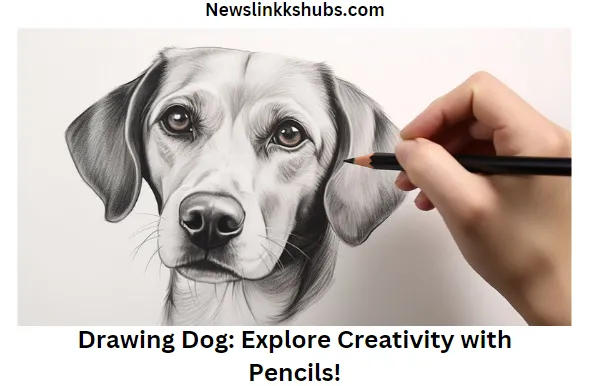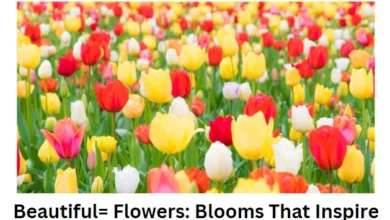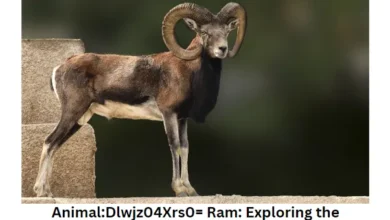Drawing:Skfktqthywc= Dog: Explore Creativity with Pencils!

The code “Skfktqthywc=” translates to “Dog” in a drawing context. Artists often use such codes to label their works creatively. Deciphering codes like “Skfktqthywc=” can initially seem daunting, but it’s a fascinating aspect of the digital art world. This code, translating to “Dog,” reveals how artists combine creativity with technology. Understanding these codes enhances our appreciation of digital art and connects us with the modern ways artists communicate themes and subjects.
This blend of technology and artistry is increasingly prevalent, showcasing the evolution of artistic expression. As we delve deeper into the digital age, interpreting these codes becomes more valuable for art enthusiasts and anyone interested in the crossroads of technology and creativity. This intriguing intersection invites us to explore the vast possibilities of digital art, making each discovery a rewarding experience.
Contents
- 1 Exploring Your Inner Artist
- 2 Materials And Tools For Dog Portraits
- 3 Mastering Canine Anatomy
- 4 Techniques For Realistic Fur
- 5 Eyes: Windows To The Soul
- 6 Capturing Movement And Posture
- 7 Backgrounds That Complement
- 8 Finishing Touches
- 9 From Sketches To Stories
- 10 Continuing Your Artistic Journey
- 11 Conclusion
Exploring Your Inner Artist
Unleashing Your Inner Artist taps into the joy of creating. Drawing is a skill anyone can learn. It starts with a simple pencil and paper. As you draw, your thoughts and emotions pour out. This form of expression is both personal and profound.
Easy Steps for Beginners: Drawing dogs can be simple and accessible for beginners. Start with basic shapes and gradually build up details. Practice makes perfect, so don’t be afraid to make mistakes and learn from them.
The Allure Of Pencil Drawing
Drawing with pencils feels magical. The soft scratching sound as the pencil moves is the shade of grey you can make. With just a pencil, your ideas come to life. It is easy to start, and you can draw anywhere.
- Simple tools: Pencils and paper are all you need.
- Versatile: Create light or dark lines with ease.
- Portable: Take them with you and draw anytime.
The Importance of Sketching
Sketching is the foundation of all great drawings. Quick sketches help you capture the essence of your subject and understand its form and movement. Spend time sketching different dog poses and expressions to build your skills.
Why Dogs Make Compelling Subjects
Dogs are loved by many. They show many emotions. Joy, sadness, and playfulness can be seen in their eyes. Each dog has a unique look. This makes them perfect to draw.
| Expression | Detail | Connection |
| Capture their feelings. | Notice the fur and eyes. | Feel a bond with the subject. |
Start drawing dogs today. Notice the joy it brings. Your skills will grow. So will your love for art.
Materials And Tools For Dog Portraits
Drawing a dog portrait takes more than just skill. Choosing the suitable materials and tools can turn a good drawing into a great one. Let’s dive into what you need to create beautiful dog portraits.
Choosing The Right Pencils
The pencils you pick can make a big difference. For dog portraits, you’ll need a range of graphite pencils. Start with 2H for light, fine lines. Then, use HB and 2B for general shading. Finally, 4B and 6B are perfect for dark shadows and details. This variety helps in adding depth to your drawing.
Paper Types For Texture And Tone
The paper you choose adds character to your dog portrait. Hot-pressed paper is smooth and great for detailed work. Cold-pressed paper, on the other hand, has a texture and is suitable for a more expressive style. Think about the look you want for your portrait before picking your paper.
| Paper Type | Texture | Use |
| Hot-pressed | Smooth | Detail work |
| Cold-pressed | Textured | Expressive style |
- Graphite pencils: 2H, HB, 2B, 4B, 6B
- Paper: Hot-pressed for details, Cold-pressed for texture
Remember, the right tools bring your dog’s portrait to life. Experiment with different pencils and papers. Find what works best for you and your style.
Mastering Canine Anatomy
Drawing dogs requires a deep understanding of canine anatomy. Artists must grasp the basics of structure and proportion while capturing the distinct features of various breeds. This knowledge ensures lifelike and accurate dog illustrations. Let’s dive into the essential elements of mastering canine anatomy for artists.
Basic Structure And Proportions
To start with a dog sketch, an artist must first understand the basic structure of a dog’s body. This includes the skeleton, muscle layout, and how they shape the dog’s form. Here’s a simple guide to help you begin:
- Skull: Almost as broad as it is long.
- Muzzle: Length varies among breeds.
- Neck: Strong and muscular for support.
- Body: Rectangular shape is familiar.
- Legs: Straight and parallel.
- Feet: Compact with arched toes.
Understanding these basics allows for an accurate framework for building your dog drawing.
Capturing Unique Breed Characteristics
Each dog breed has a set of unique characteristics. These are key to making your drawings recognizable. Consider the following when sketching:
| Breed | Distinct Feature |
| Beagle | Large floppy ears |
| Boxer | Square muzzle and strong jaw |
| Dachshund | Long body and short legs |
Pay attention to these traits to capture the essence of the breed you are drawing.
Techniques For Realistic Fur
Drawing realistic fur makes a dog’s drawing come alive. Mastering fur textures is critical. It requires skill and patience. Artists use special techniques. They focus on layering, shading, and texture, creating depth and lifelike fur. Let’s explore these techniques.
Layering And Shading Tips
Layering is crucial for fur. Start with light pencil strokes. Add darker layers gradually. This creates volume. Shading adds dimension. Use a mix of hard and soft pencils. Hard pencils create fine lines. Soft pencils fill in darker areas. Remember these points:
- Begin with a base layer using a light pencil (2H).
- Add layers with varied pencil hardness (HB to 4B).
- Use a blending stump for smooth transitions.
- Keep strokes in the direction of the fur growth.
Creating Texture And Depth
Texture makes the fur look real. Depth makes it pop. Achieve texture with varied strokes. Mix short and long marks. Use a sharp pencil for fine hair. A dull pencil works for clumps of fur. Follow these tips:
- Observe the fur pattern on real dogs.
- Use an eraser to create highlights.
- Apply pressure variably for different textures.
- Overlay colours for a rich, natural look.
Practice these techniques often. Your skill in drawing realistic dog fur will grow.
Eyes: Windows To The Soul
When drawing a dog, the eyes are critical. They are like windows. They show if a dog is happy, sad, or curious. Eyes make the drawing feel real.
Achieving Lifelike Expressions
To draw a dog’s eyes with life, start with shape. Round for innocent looks. Almond for sharpness. Each shape tells a different story.
- Use light and shadow to make the eyes glow.
- Draw pupil reflections to show what the dog sees.
- Shade around the eyes to show depth and emotion.
These steps help the eyes speak without words.
Detailing For Emotional Impact
Details in the eyes create feelings. A tiny tear can show sadness, and a sparkle can show joy or excitement. It’s all in the small touches.
- Draw wrinkles to show worry or age.
- Add highlights for a lively look.
- Use soft lines for a gentle gaze.
Every detail adds to the dog’s story. It makes viewers feel something.
Capturing Movement And Posture
Capturing Movement and Posture in drawing can breathe life into sketches and allow the artwork to tell a story. Dynamic sketches of dogs require observation of their playful nature. Capturing the essence of a frolicking pup involves understanding the basics of motion in art.
Dynamic Poses To Sketch
Creating lively dog drawings starts with dynamic poses. These poses show energy and life. Start with quick sketches to loosen up. Use simple lines to capture the dog’s basic movement. Here are some dynamic poses to try:
- Running – Stretch the body out with one paw lifted.
- Jumping – Show all four paws off the ground.
- Playing – Tilt the head and bend the body.
Conveying Motion In Still Art
Conveying motion in still drawings is a skill. It makes the viewer feel the movement. Use these tips to create a sense of motion:
- Action lines – Draw quick, light lines to show direction.
- Blur effects – Suggest speed with soft edges or smudging.
- Posture – Tilt and twist the body to show activity.
Remember, the goal is to make the dog’s movements look real. Practice these techniques often, and soon, your dog drawings will leap off the page!
Backgrounds That Complement
Drawing a dog is fun and creative. A well-chosen background can make your dog drawing stand out. The correct setting adds life and context to your artwork. It tells a story. Let’s explore how to pick scenes and integrate your dog into them.
Selecting Scenes And Settings
Think about where dogs love to be. Choose a background that fits your dog’s personality. Consider these options:
- Parks with green grass and trees
- Beaches with sand and waves
- Home settings, like a cosy corner
Make sure the scene matches the dog’s breed and activity. A playful scene suits an energetic puppy, while a calm setting suits a resting senior dog.
Integrating Your Dog Into The Environment
Once you pick a scene, blend your dog into it. Use these tips:
- Match the lighting on the dog and background.
- Draw shadows to connect the dog to the ground.
- Add details like paw prints or a favourite toy.
Use colours from your dog’s background to create harmony. Imagine the dog’s interaction with the scene. Is it running, sitting, or playing? Show that in your drawing.
Finishing Touches
‘Finishing Touches’ turns a good drawing into an incredible masterpiece. They add life and emotion to your artwork. This is when your dog drawing truly comes to life. Let’s explore how to refine and preserve your creation.
Evaluating And Refining Your Drawing
Take a step back and look at your work. Does it capture the essence of your dog? Use bold strokes to define features. Soften lines where shadows blend. Erase smudges to clean the image. Add highlights to the eyes and fur for a realistic touch.
- Check proportions and adjust as necessary.
- Refine details in the face and paws
- Deepen shadows for contrast
- Use an eraser for highlights and texture
Remember to take breaks. Fresh eyes find areas that need improvement. Patience is key. Do not rush the process.
Presentation And Preservation Of Your Artwork
Presenting your drawing impacts how it is viewed. A clean border focuses attention on your dog. Choose a suitable frame that complements your artwork.
| Preservation Step | Action |
| Fixative Spray | Apply to prevent smudging |
| Matting | Use an acid-free mat to protect |
| Framing | Select UV-protective glass |
| Storage | Keep in a cool, dry place |
Use a fixative spray to prevent smudging. Mat your drawing with acid-free materials. These steps ensure your dog drawing lasts for years. Proper care showcases your dedication to your art.
From Sketches To Stories
From Sketches to Stories breathes life into simple drawings and transforms lines into tales. Every artist begins with a sketch, but the magic happens when those sketches narrate a story. In this realm, a dog isn’t just a dog. It becomes a character with a journey, emotions, and adventures. This process is crucial for artists aiming to connect deeply with their audience. Let’s dive into how narrative can elevate your art.
Incorporating Narrative Into Your Work
Stories captivate us. They make a simple dog sketch that is more than just lines on paper. Here’s how to infuse narrative:
- Set the Scene: Imagine where your dog lives. A farm? A city?
- Character Traits: Is your dog brave? Shy? Curious?
- Develop a Plot: Maybe your dog goes on a quest or finds a friend.
Consider these elements to create a world around your sketches.
Connecting With Your Audience Through Art
Art touches hearts. Your dog drawings can create bonds. Here’s how:
- Use emotions to make your dog relatable.
- Show interaction with other characters or environments.
- Include details that tell a backstory.
These strategies will help viewers see their stories in your art.
Continuing Your Artistic Journey
Welcome to the next chapter of your artistic journey with drawing! As you embark on this path, remember that each stroke on the canvas is a step towards mastering the art of sketching your furry best friend. In this section, we’ll focus on two critical aspects essential for growth: practising and improving your skills and exploring new subjects and techniques. Let’s dive into how these can shape your artistic future.
Practising And Improving Your Skills
Consistency is vital in any skill, and drawing is no exception. Here’s how you can enhance your drawing abilities:
- Sketch Daily: Make it a habit to draw something every day, even if it’s a quick doodle.
- Set Challenges: Push your limits by setting periodic challenges, like drawing a dog in 20 styles.
- Review and Reflect: Look at your past drawings, note improvements, and identify areas that need work.
- Join a Community: Engage with other artists for feedback and inspiration.
By incorporating these practices, you’ll see a noticeable improvement over time.
Exploring New Subjects And Techniques
Art thrives on variety and experimentation. Here’s how you can broaden your artistic horizons:
- Try Different Mediums: Swap pencils for charcoals or paints and observe the change in texture and depth.
- Study Anatomy: Understanding a dog’s anatomy can help you sketch more accurately and lifelike.
- Attend Workshops: Learn from experts and discover new ways of seeing and drawing your canine subjects.
- Experiment with Styles: From realism to cartoons, explore various styles to find what resonates with you.
Experimentation will keep your practice fresh and expand your creative toolkit.
Conclusion
Embracing the art of drawing can unlock a world of creativity, especially when our furry friends are the subjects. By mastering the techniques we’ve discussed, you’ll be well on your way to capturing the essence of your beloved dog on paper.
To read more articles, please check: Newslinkkshubs.com




